Preparing the Vegetable Garden for Winter
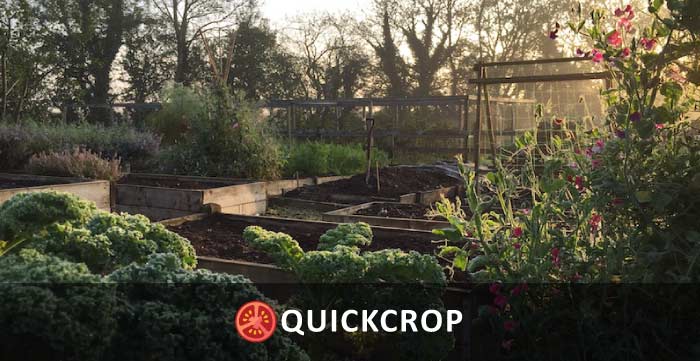
Right, well it's started to get a bit cold and the leaves are falling so I suppose we will have to admit that winter is coming. I have mentioned it here before that I am not a winter fan. This is primarily because of the short days, when I must slip out to work while it's still dark and come home after the sun has set. I miss being outside.
Things will be a little different this year as we have big plans for the Quickcrop garden, which includes workers accommodation, a vegetable garden re-design, a new compost area and a wildlife-friendly flowering perennial oasis.
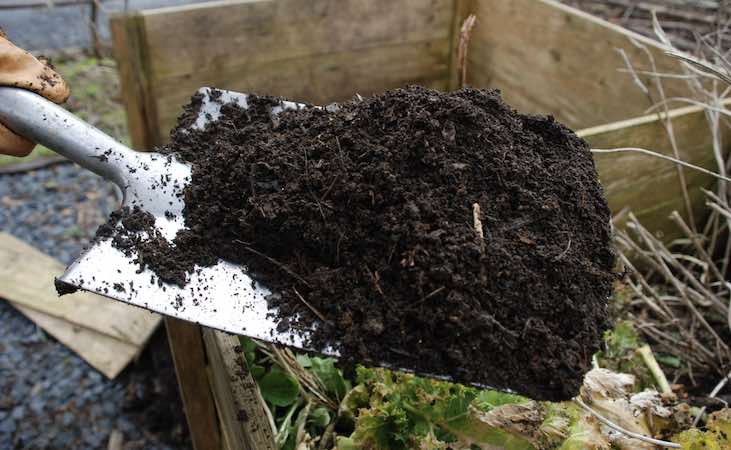
While there won't be much to plant over the winter months, there is a lot of construction going on - so my time will have to be divided between the indoor and outdoor office. I will keep you posted on what's happening. I will probably be moaning that it's too cold and wet and I want to be back at my desk.
Feeding the Soil
I know I cover more or less the same thing every year, but for the benefit of new growers I think it is worthwhile to go through it again. The main point is that for healthy and sustainable organic growing, we need to feed the soil.
Feeding the soil means behaving in the same way mother nature does and adding organic material to the surface of your beds. In nature, dead plant or animal material rots down with the help of an army of organisms, from invisible bacteria to stuff we can see like earthworms and other creepy crawlies.
This dead material is slowly incorporated into the soil, releasing its nutrients as it breaks down - and ultimately becoming food for our plants.

One of the key advantages of this method of gardening is that nutrients are released slowly over a full season and at a rate that is in tune with your plant's needs. This means that by adding a generous layer (approx. 5cm) of good garden compost to your beds in Autumn, you will be feeding your plants for 12 months and should not need to top up with any additional feeds.
Chemistry Vs Biology
Since the invention of man made fertilisers in the early 1900's, we have been looking to chemistry rather than biology to feed our plants. While on one hand, this has made it possible to produce food for an ever growing population, on the other it has resulted in severely degraded agricultural land. This is because the natural biological process (adding compost or manure) both improves existing soil and builds new soil, while chemical nutrients only feed the plants.

Reducing the use of chemical fertilisers while continuing to feed the global population is one hell of a conundrum, but for us home vegetable growers it is an easier transition. Any organic material is good (and by organic material, I mean something that was once alive): the most common being garden compost, but also manure, grass clippings, leaf mould or - if you live by the coast - seaweed.
It is also worth remembering that the nutrients contained in well rotted compost or manure are relatively stable (insoluble), so they aren't washed out by winter rain - at least not as much as you might think.
Protecting Soil
I had been in the habit of adding garden compost and seaweed to my beds and covering the whole lot in black weed control fabric to protect it, but I am not sure about this now. The idea of the fabric was to keep the worst of the rain off, increase the temperature underneath and speed up decomposition. However after comparing covered and uncovered beds, I'm not sure the compost breaks down any quicker.
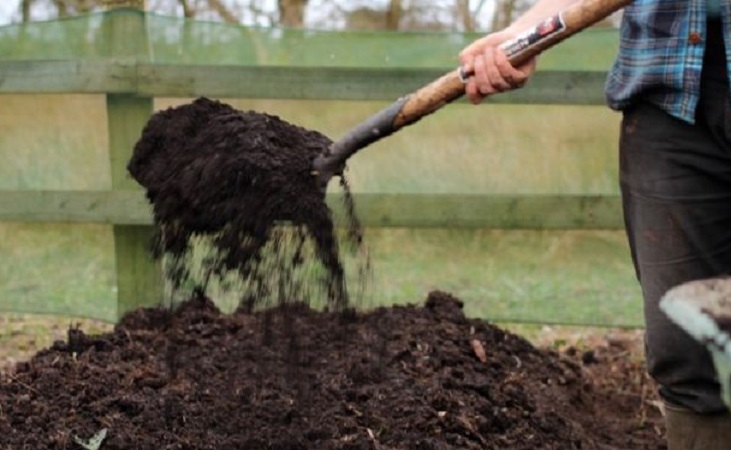
Whatever about the pros and cons of the weed control fabric, it is very important that any bare soil is covered with something as bare soil will degrade over winter. A nutrient rich compost is ideal because it both protects and feeds the soil at the same time. Compost added in the Autumn will also break down to a degree over winter and leave you with a nice tilth to sow or plant into in spring.
Unless you have been bringing in material from elsewhere to add to your compost heap, it is unlikely you will have enough garden compost to cover your vegetable beds. If this is the case, I recommend our peat free organic compost as an excellent substitute. This is a nutrient-rich mix of composted plant material and manure which will improve soil structure and fertility.
As with any commercial grade compost, it may arrive a little 'hot' (meaning it has not completely broken down), so again it is a good idea to spread it in Autumn to give it plenty of time to break down further.
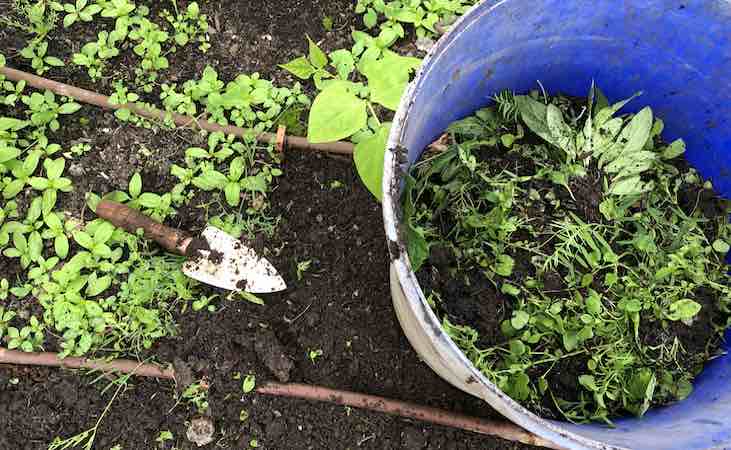
Garden update
As regards what I have been doing in the garden, it has mostly been clearing spent crops, weeding, adding compost, and last week planting onions and garlic. As is always the case, I have a few beds which have got a bit weedy which have now been cleared.
I am still not comfortable going into green manures in detail here as there are so many conflicting opinions on it, but I'm starting to think they may be a more important part to my soil care cycle than I have given them credit for.
What is swaying me is that, because my garden got out of hand last year, I am having to deal with a lot more weeds than usual. I have had to clear mats of chickweed and other fast growing annual weeds, and have been struck by the amount of soil life they support. Weedy soil around plants has a lot more earthworms and other soil friends than soil covered with compost only, which illustrates the important exchanges going on in the rootzone.

I am still unsure how the balance will work but I am experimenting with green manure this year to keep the rootzone alive for as long as possible. I will be covering the crop with compost in November. I have been told that this may attract more slugs (a nightmare this year), but we shall see.
Above we see some productive beds in the polytunnel taken on Sunday. In the foreground is globe shaped carrot 'Paris market round', which is a bit of an experiment to see if I will get roots this side of Christmas. I don't think it's going to work!
Behind we have red batavia lettuce, rocket and spinach which I planted as seedlings a couple of weeks ago for autumn and winter greens. The bed behind is full of new potatoes, which I planted in early August for harvest in early November. I was disappointed to see some blight on the leaves (which I removed) but I am hoping I can nurse them along to a reasonable harvest.
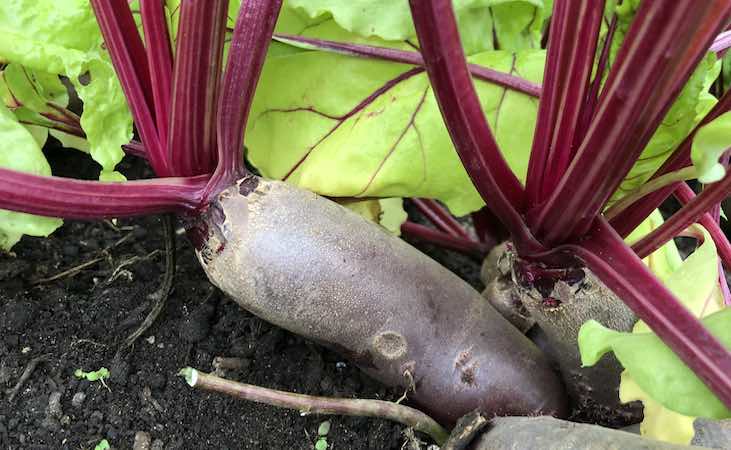
This funny looking beetroot (also in the tunnel) is 'Renovo', a cylindrical root which I am growing for pickling. The advantage of the long roots is that they produce slices of roughly the same size for your pickle jars.
When growing beetroot in the tunnel make sure to keep them watered. If the soil gets dry for an extended period, you can end up with woody roots.
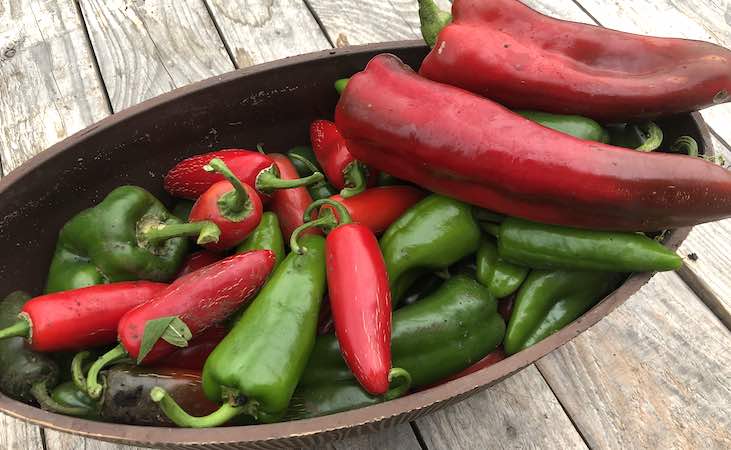
Here's a nice looking crop of sweet Marconi and jalapeno peppers, which I had to pick because I snapped two full branches off when I was weeding. I got plenty of fully ripe sweet peppers this year which was a good result considering there was so little sunshine.
I am thinking of preserving both the sweet peppers in oil (and goat's cheese?) and the jalapenos in vinegar; the mixture of green and red will look great in the jar.







